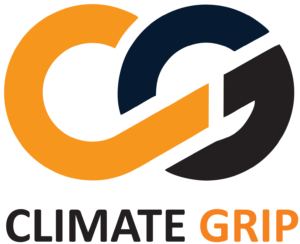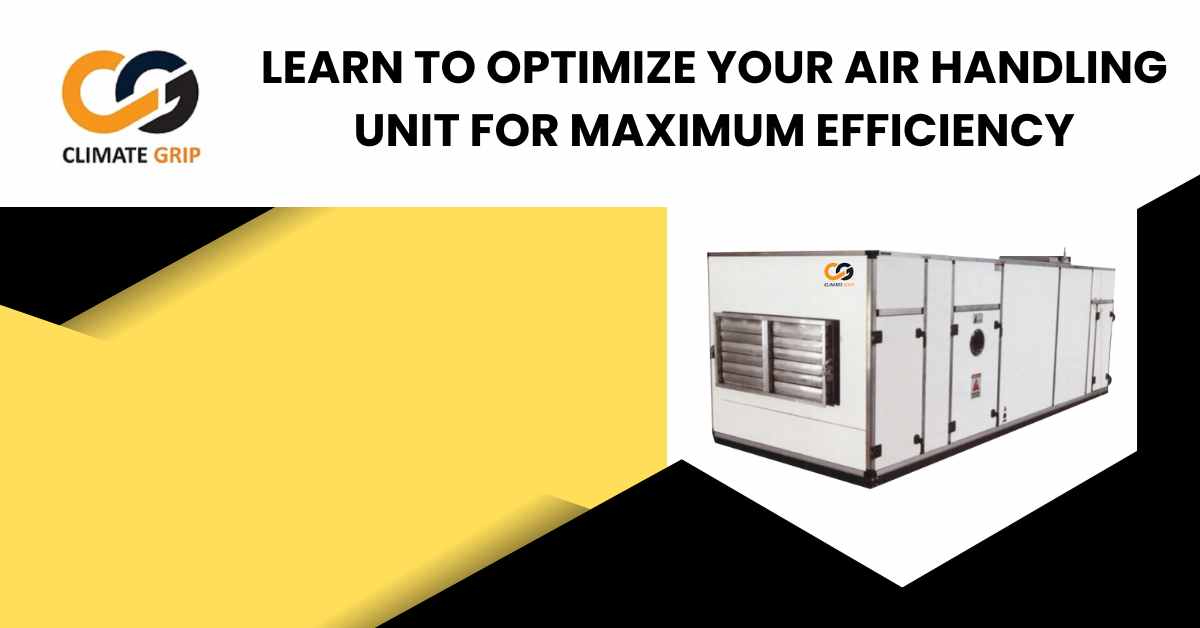Air Handling Units (AHUs) are critical components of HVAC systems in commercial and industrial buildings, responsible for ensuring indoor air quality and comfort. Optimizing your AHU can lead to substantial energy savings, lower operational costs, and improved air quality. Here, we’ll explore various strategies to maximize the efficiency of your AHU and help you achieve a healthier, more sustainable building environment.
Regular Maintenance:
Proper maintenance is the cornerstone of AHU efficiency. Regularly scheduled inspections, cleaning, and component replacements can prevent system degradation and ensure it operates at its best. Maintenance tasks should include:
- Cleaning and replacing air filters to maintain good airflow and prevent strain on the fan motor.
- Energy consumption and friction are decreased by lubricating moving components.
- Checking and tightening electrical connections to ensure safe and efficient operation.
- Inspecting the belts for wear and adjusting tension as needed to maintain optimal performance.
- Cleaning and inspecting the heat exchanger or coil to maximize heat transfer efficiency.
Upgrade Your Control System:
Upgrade to a modern BAS or DDC system for efficient operation. Centralized control and remote monitoring enable optimized settings for energy savings based on occupancy, weather, and air quality.
Variable Frequency Drives (VFDs):
VFDs adjust fan and motor speeds based on load, maintaining indoor air quality while minimizing energy use, particularly effective during low occupancy periods.
Optimize Ventilation Rates:
To maintain indoor air quality without excessive energy use, employ demand-controlled ventilation (DCV), adjusting airflow based on occupancy using CO2 sensors.
Energy Recovery Systems:
Energy recovery systems (e.g., heat exchangers, enthalpy wheels) recover energy from exhaust air, pre-conditioning incoming fresh air, reducing the strain on heating and cooling systems and yielding significant energy savings.
Airside Economizers:
Use airside economizers to cool indoor spaces with outdoor air when possible, reducing mechanical cooling and saving energy. Ensure proper controls for efficient system operation.
Use High-Efficiency Components:
Boost your AHU’s performance with high-efficiency components like fans, motors, drives, and HEPA filters for improved air quality and system longevity.
Insulation and Sealing:
Effective insulation and sealing in AHU components prevent air leaks, optimize energy efficiency, and maintain temperature and humidity control.
Airflow Balancing:
Maintain balanced airflow for even temperature distribution. Regularly check and adjust dampers and registers to prevent HVAC overwork.
Data-Driven Insights:
Implementing a data analytics platform for your AHU can offer valuable insights. Real-time data on temperature, humidity, and equipment operation helps you spot trends, make informed decisions, and optimize AHU efficiency.
Most efficient air conditioning methods:
The most efficient air conditioning method depends on various factors, including the climate, building design, and specific requirements. However, some of the most efficient air conditioning methods commonly used today include:
Ductless Mini-Split Systems:
Ductless mini-splits efficiently cool individual rooms without ducts, comprising an outdoor unit and indoor air handlers, eliminating ductwork energy loss.
Geothermal Heat Pumps:
Geothermal heat pumps are highly efficient HVAC systems that use stable ground temperature for heating and cooling. Despite higher upfront costs, they deliver long-term energy savings.
Evaporative Cooling:
Evaporative cooling (swamp coolers) is highly efficient in arid regions, using water evaporation for cooling without the energy-intensive refrigeration cycle of traditional AC systems.
High-Efficiency Central Air Conditioning:
High SEER-rated central AC systems offer efficient cooling for large spaces with modern features like variable-speed compressors and zoning for enhanced efficiency.
Natural Ventilation and Passive Cooling:
In certain climates, passive cooling methods like proper building orientation, shading, and thermal mass can offer efficient cooling without mechanical systems.
Solar-Powered Air Conditioning:
Solar AC uses photovoltaics for cooling, reducing energy costs and environmental impact when appropriately designed and sized.
Hybrid Systems:
Hybrid HVAC systems combine different cooling methods, such as a heat pump with a gas furnace, to maximize efficiency based on changing weather conditions and energy prices.
Energy-Efficient Design and Building Envelopes:
Efficient air conditioning begins with a well-insulated building, energy-efficient windows, and a sound building envelope, reducing the workload on cooling systems for enhanced efficiency.

